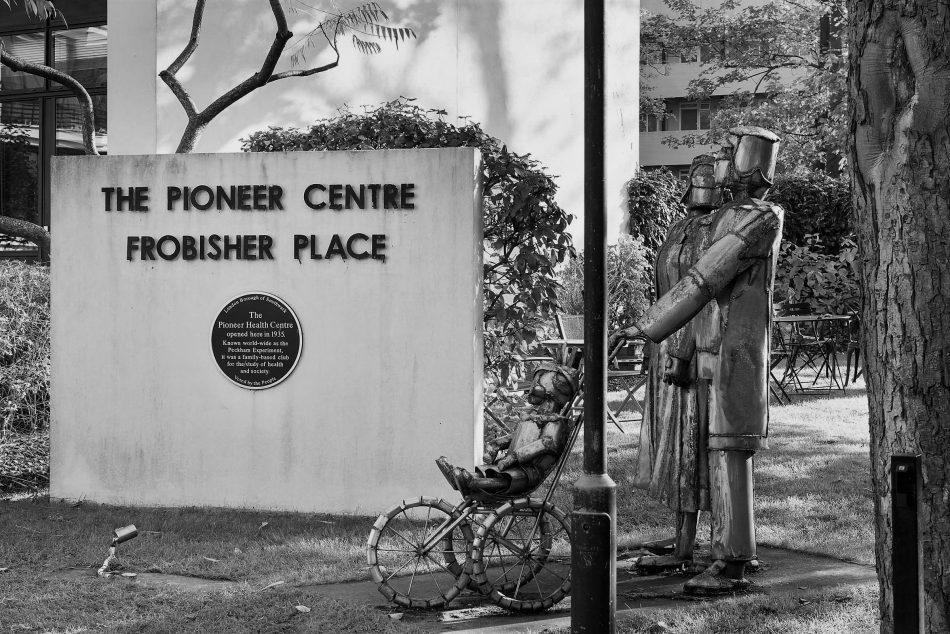‘Health was more than just the absence of illness.’
(Dorothy Batten, former Pioneer Health Centre member, interviewed in 2018)
The concept that healthy lifestyle choices and positive social interaction could help not only to prevent illness but to promote general well-being is familiar in the 21st century. That this was an idea two doctors proposed in the 1920s is more surprising. To research and record their theories, in 1926 George Scott Williamson and Innes Hope Pearse opened the Pioneer Health Centre at 142 Queen’s Road. Peckham was chosen as a location for the project as it had a mixed demographic with no mass unemployment. Membership was open to all families living locally, and the only conditions of joining the Centre were that the whole family joined and that members underwent regular health checks. These physical examinations allowed the doctors to document the impact the Centre’s ethos and environment had upon the health of its members. For members, it ensured they had access to a doctor at a time when many would not visit their local GP as, in pre–NHS Britain, they had to pay for this service.
The Queen’s Road premises closed after three years. Following a period of fundraising, a new, much larger, purpose-built space opened in nearby St Mary’s Road in 1935. The impressive building, designed by Sir Owen Williams, was constructed largely of glass which allowed the medical staff to observe how members interacted. It featured a swimming pool, gymnasium, nursery and a cafeteria serving organic food grown at Oakley Farm, Bromley Common (leased by Pearse in 1935). Regular exercise classes were held, often on the roof of the building, as were dances. The children’s nursery included specially designed equipment. The social aspect of the enterprise should not be underestimated and the sense of community fostered at the Centre greatly contributed to its success.
Doctors Williamson and Pearse hoped that this local experiment would be replicated on a larger scale. The interest that the project attracted, both nationally and internationally, suggested that this might happen. In 1939 the Centre was visited by Queen Mary. It was forced to close soon after, however, following the outbreak of the Second World War (the glass building was especially vulnerable to bombing). A number of families were evacuated to Oakley Farm until it was requisitioned by the RAF.
The Centre re-opened after the war but closed again permanently in 1950, shortly after the introduction of the National Health Service. For a time the building was used as a leisure centre run by Southwark Council, and for classes run by the Southwark Adult Education Institute. It was sold in the 1990s and converted into privately–owned flats.
The work of the Centre still resonates today. In 2017, Ilona Sagar presented Correspondence O at the South London Gallery (SLG). This exhibition and installation explored the history of the Centre, its subsequent conversion into a gated community and the complex, changing landscape of public health. Also in 2017, the Art Assassins, the SLG’s young people’s forum, began working on The Peckham Experiment: A Centre for Self-Organisation, a Heritage Lottery funded project run in association with the Pioneer Health Foundation (PHF), the Wellcome Library, the Science Gallery at Kings College, Peckham Vision and the Wilderness Wood. Working alongside artists and historian-in-residence Dr. Giulia Smith, the Art Assassins have investigated not only the history of the Peckham Experiment but what its ethos and aims mean today. As part of this project, the group have interviewed people who were connected with the Centre, including Dorothy Batten who was a member of the Centre as a child. Listen to these interviews by clicking on the link below.
Peckham Experiment interviews.
A short film made about the Peckham Experiment in 1947, The Centre, is available to watch on the BFI’s website.
